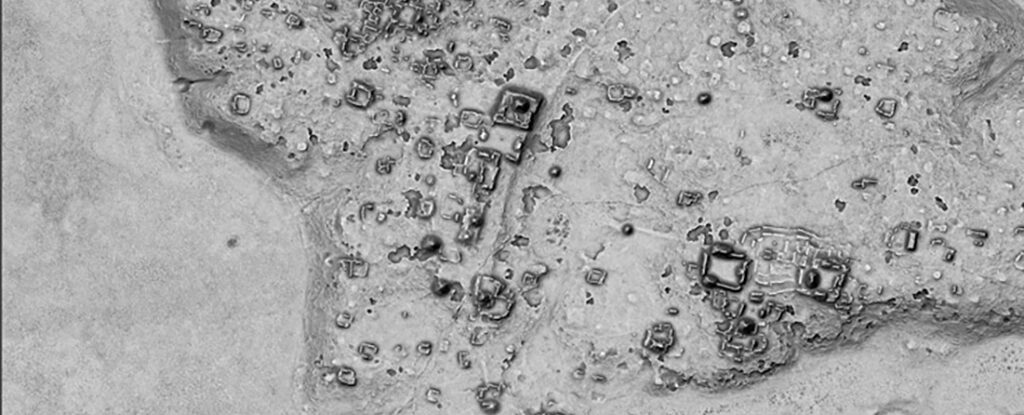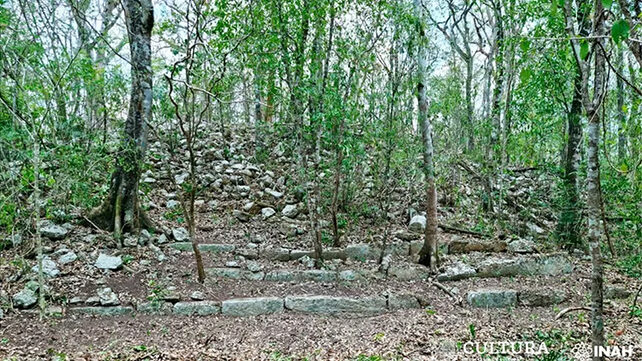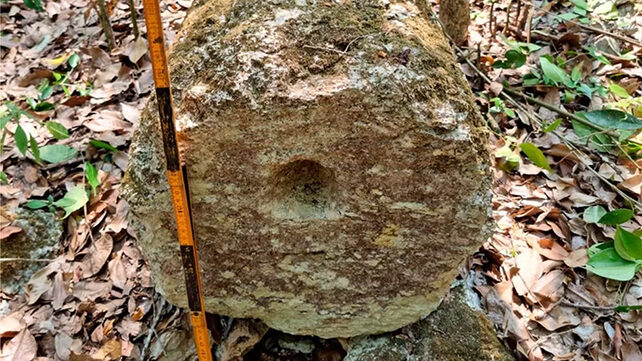
© Ivan Šprajc/INAHLIDAR imagery showing the settlement.
With satellite imagery and other modern tools, much of the globe is comprehensively mapped out at this point - but there are still plenty of secrets hidden in the most remote and inaccessible parts of the world.
A team of archaeologists has been rewarded for trekking some 60 kilometers (37 miles) into the dense Yucatan Peninsula jungles of southern Mexico: they've discovered a long-lost ancient Maya city that there are no previous records of.
The new city
has been named Ocomtún, which means "stone column". The sprawling site includes plazas, large pyramid-style buildings, stone columns, and other structures arranged in patterns of concentric rings.

© Ivan Šprajc/INAHStone steps discovered on the site.
Of course a lot of the city has been lost to time: the archaeologists say that the stone columns may well have originally been entrances to upper rooms. There's also
a ball court,
for recreational and perhaps religious purposes.
Ahead of the field work done by the researchers, overhead
LIDAR scans were carried out across the area. The technology uses the reflections of laser beams to detect buildings that are otherwise hidden from view by trees and undergrowth.
"The biggest surprise turned out to be the site located on a peninsula of high ground, surrounded by extensive wetlands," says archaeologist and team leader Ivan Šprajc, from the Slovenian Academy of Sciences and Arts (via Google Translate).
"Its monumental nucleus covers more than 50 hectares [124 acres] and has various large buildings, including several pyramidal structures over 15 meters [49 feet] high."These tropical forests are huge in size: there's around 3,000 square kilometers (1,158 square miles) of uninhabited jungle in this part of the world, and to date there's very little known about what it's hiding. Part of the reason is that its foliage is so dense.

© Ivan Šprajc/INAHOne of the stone columns discovered by the archaeologists.
According to Šprajc and his colleagues,
the city would have been an important local hub during between 250 and 1000 CE, known as the Classic era in terms of Maya civilization.
An analysis of ceramic pot fragments discovered at the site should be able to tell researchers more about when the region was inhabited.
For centuries, the Maya people were the dominant civilization across
Mesoamerica - what is now Central America and the most southern section of North America.
The Maya are well-known for their advancements in architecture, culture, calendar systems, mathematics, and more. The Maya civilization suffered a major collapse during the 9th century CE, thought to be brought on by a combination of civil war, drought, and other environmental factors. However, it wasn't until the 17th century that the last Maya city fell to Spanish invaders.Thanks to systems such as LIDAR, we're
discovering more and more of the settlements left behind by the Maya. Buildings in these settlements would've required plenty of expertise and plenty of manual labor to put in place.
Archaeologists are also
working on the ground to recover artifacts that reveal more about the people of this ancient civilization. These fragments of left-behind lives help fix the dates when these regions were inhabited.
Now we can add Ocomtún to the thousands of Maya sites we already know about. As more research is done on the region and what's still there to analyze, we'll no doubt be hearing more about the place in the future.
Reader Comments
I suspect there are places in the south in the american continent where aspects of culture are ripe for 2-way discovery, but tis a delicate matter maybe depending on humility.
They've been actively involved in hiding our past and are now in the process of removing humanity's ability to think, their winning regrettably.
Alien involved was the making of planet Earth and technology that they introduced has been constantly adapted through time, one now walks in a landscape of GREAT ignorance amongst those who stand beside one.
I pleased that such finds are now being recognised, its a shame 99.9% of Earth's population will never get to realise the truth.
WN3